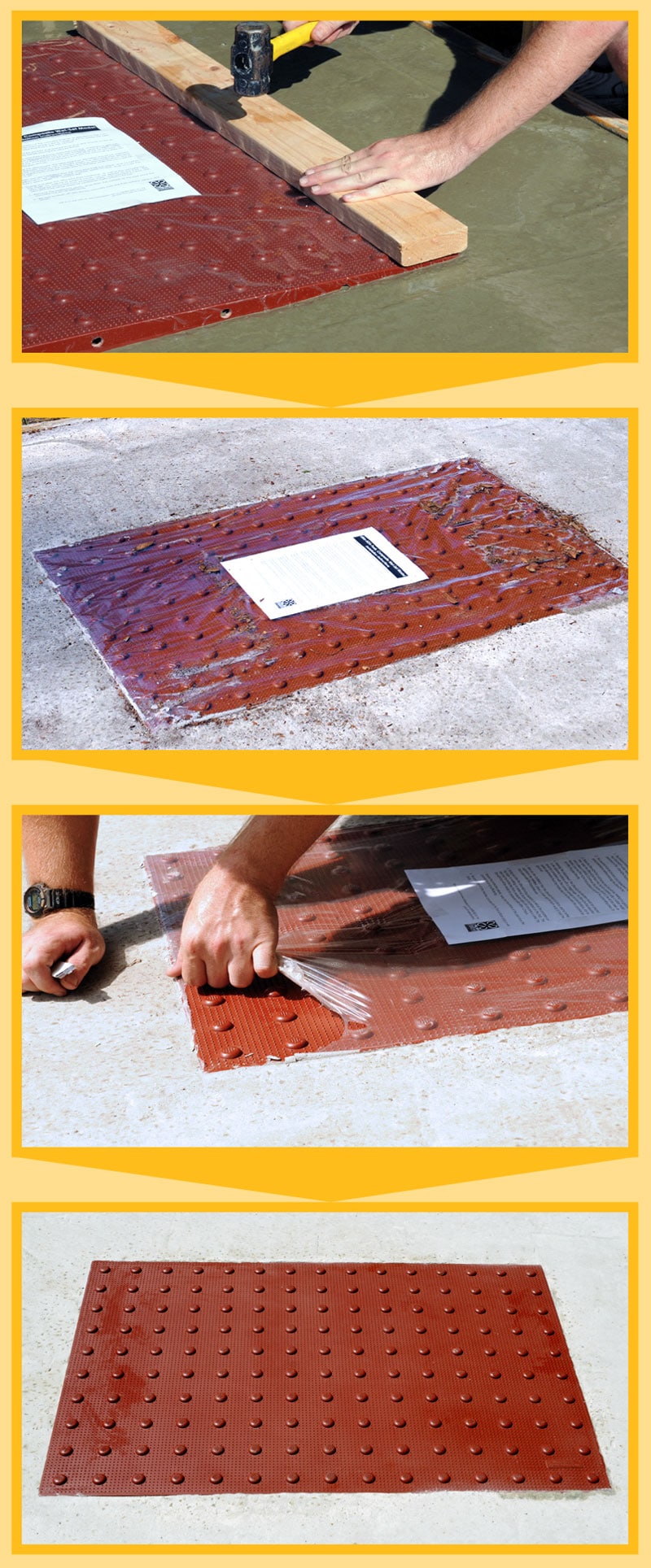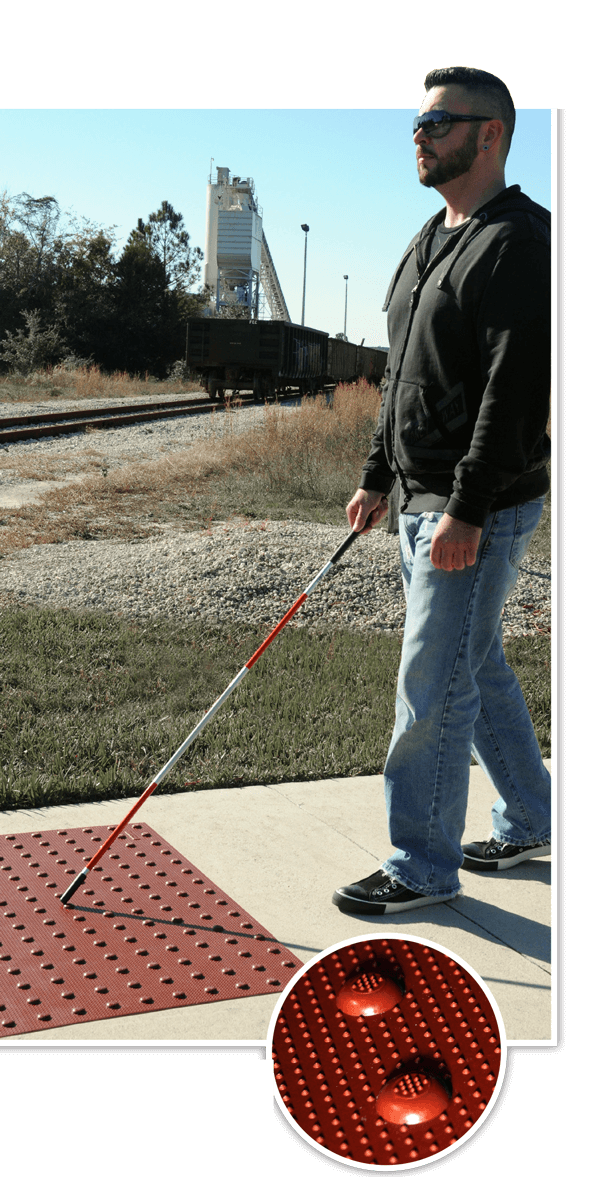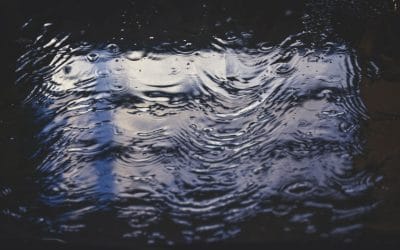ULTRA-ADA PADS
Ultra-ADA-Pads: Urethane & Composite Pads
Ultra-ADA Pads are designed for the visually impaired to feel the raised, truncated domes with their feet. This, in combination with the tapping cane, can alert them to a different surface than the surrounding concrete sidewalk and an upcoming intersection.
- Flexible Pads For Slopes And Curves
- Low Cost Composite Pads
- Surface Mount & Cast-In-Place Models
Low Cost Composite Pads Help Meet ADA Compliance
Simple Installation Process:


- Ultra-ADA Pads are designed for the visually impaired to feel the raised, truncated domes with their feet. This, in combination with the tapping cane, can alert them to a different surface than the surrounding concrete sidewalk and an upcoming intersection.
- Two layers of gel coat provide for maximum UV resistance and color fastness.
- Continuous fibers that run throughout the Pad (including inside of the domes) make Ultra-ADA Pads the strongest and most durable pad on the market.
- Installs quickly and easily.
- Available in wet-set, cast-in-place only.
Detectable Warning System Aids The Visually Impaired

- Available in four (4) sizes: 2’ x 2’, 2’ x 3’, 2’ x 4’ and 2’ x 5’.
- Flexible construction conforms to fit dips, slopes and inclines in sidewalks and walkways.
- Ultra-ADA Pads are designed for the visually impaired to feel the raised, truncated domes with their feet. This, in combination with the tapping cane, can alert them to a different surface than the surrounding concrete sidewalk and an upcoming intersection.
- Installs quickly and easily using adhesive and anchors (included).
- Better slip resistance than composites.
- Better impact resistance than composites.
- UNBREAKABLE.
- Complies with the Americans with Disabilities Act (ADA), 49 CFR 37.9.
Provide tactile warning surfaces which comply with the detectable warnings on walking surfaces section of the Americans with Disabilities Act.
Title 49 CFR Transportation, Part 37.9 Standards for Accessible Transportation Facilities, Appendix A, Section 4.29.2 Detectable Warnings on Walking Surfaces.
| Ultra-ADA Pads, Urethane Surface Mount (Retrofit) |
||||
| Size ft. (mm) | Yellow | Brick Red | Safety Red | Black |
| 2 x 2 (610 x 610) | Part# 0750 | Part# 0760 | Part# 0765 | Part# 0756 |
| 2 x 3 (610 x 914) | Part# 0753 | Part# 0763 | Part# 0766 | Part# 0759 |
| 2 x 4 (610 x 1,219) | Part# 0751 | Part# 0761 | Part# 0767 | Part# 0757 |
| 2 x 5 (610 x 1,524) | Part# 0752 | Part# 0762 | Part# 0768 | Part# 0758 |


ADA Accessibility Guidelines for Buildings and Facilities (ADAAG)
A. SUMMARY:
- Detectable warnings are required at any intersection or “hazardous vehicular area”. These areas are defined as follows:
- a walk that crosses or adjoins a vehicular way and,
- with walking surfaces not separated by curbs, railings, or other elements between the pedestrian areas and vehicular areas.
- Detectable warnings are also required at the edges of reflecting pools if not
protected by railings, walls or curbs. - Future requirements will include hazardous areas and stairways.
B. WHO MUST COMPLY?
- Any property owner or municipality that has an area as described above. Sidewalks, crosswalks and other walking surfaces that were installed before July 26, 2001 are not subject to the requirements.
C. WHAT ACTIONS ARE NECESSARY FOR COMPLIANCE?
- Detectable warnings that are installed must meet the following requirements.
- They shall consist of raised truncated domes with a diameter of nominal 0.9 in (23 mm), a height of nominal 0.2 in (5 mm) and a center-to-center spacing of nominal 2.35 in (60 mm).
- They shall contrast visually with adjoining surfaces, either light-on-dark, or dark-on-light. The material used to provide contrast should contrast by at least 70%.*
- The material used to provide contrast shall be an integral part of the walking surface.
- Detectable warnings used on interior surfaces shall differ from adjoining walking surfaces in resiliency or sound-on-cane contact.
*Contrast in percent is determined by: Contrast = [(B1 – B2)/B1] x 100 where B1 = light reflectance value (LRV) of the lighter area and B2 = light reflectance value (LRV) of the darker area. Note that in any application both white and black are never absolute; thus, B1 never equals 100 and B2 is always greater than 0.
Chemtech International Inc. is an exclusive distributor of UltraTech International Inc., the industry-leading manufacturer of stormwater management and erosion control products. All UltraTech International Inc. products are designed to meet the New Stormwater Management Regulations of the EPA’s Clean Water Act, to help businesses maximize operational efficiency while protecting the environment.
What is stormwater?
Stormwater Management Products
Cost-Efficient Solutions
Get a Custom Quote
Fill out the form below.
6 of America’s Worst Stormwater Incidents
Storm drainage solutions and water runoff systems play vital roles across the United States, keeping facilities compliant with all applicable regulation and protecting local communities and ecosystems from harm. While few would deny that stormwater is a genuine problem that needs to be mitigated, not everyone is aware of just how dangerous this can be.
The Stormwater Runoff Journey: Where Does Stormwater Runoff Go?
Where does stormwater runoff go once it enters the storm drain system? What are the effects of stormwater pollution on local environments? These are important questions, and they are becoming increasingly so in the modern age as stormwater problems continue to mount up.
The Benefits of Capturing and Using Stormwater
We need storm drain solutions to prevent the wealth of problems that can follow a period of heavy weather or increased rainfall. But what if we are looking at stormwater the wrong way? What if stormwater capture could turn this nuisance into a valuable resource for businesses and communities?



